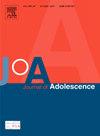Early Adolescents' Attitudes Towards and Interest in Care-Oriented HEED Professions: Gender Differences and Associations With Academic Achievement
Abstract
Introduction
Healthcare, early education, and domestic (HEED) fields refer to feminine-typed care-oriented workforce domains. HEED fields remain dominated by women, yet this disparity and its developmental antecedents are often overlooked. This study investigated factors associated with early adolescents' interest in HEED professions.
Methods
US early adolescent participants (n = 1707; Mage = 12.29; 46% girls, 44% boys, 9.5% another gender identity; 36% Latine, 31% White, 21% Black, 6% Asian/Pacific Islander, 7% multiracial/another race/ethnicity) completed surveys in January and March 2021. Participants indicated their perceived value of HEED and masculine-typed jobs (i.e., how much money people in these jobs should make), interest in these jobs, and fear of negative evaluation. Schools reported STEM and English/Social Studies GPA. Hypotheses were preregistered.
Results
Participants believed that masculine-typed jobs are more valuable than HEED jobs but reported more interest in HEED jobs. Girls (vs. boys) and Asian/Pacific Islander and Black youth (vs. White youth) reported greater interest in HEED careers. Greater perceived value of HEED careers, higher fear of negative evaluation, and lower STEM (but not English/Social Studies) GPA were associated with greater HEED career interest cross-sectionally. Only perceived value of HEED careers and identifying as a girl were associated with HEED career interest in the short-term longitudinal analyses, controlling for baseline levels. Moreover, longitudinal analyses suggested bidirectional associations between HEED career interest and value over time.
Conclusion
Results highlight that both demographic and psychosocial factors among early adolescents may shape later disparities in HEED fields.


 求助内容:
求助内容: 应助结果提醒方式:
应助结果提醒方式:


